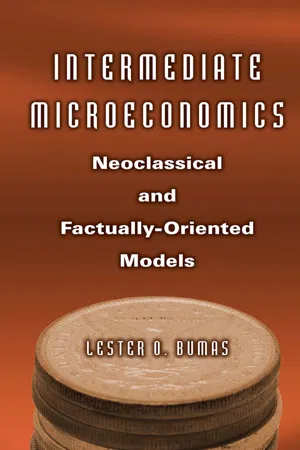Economics
Supply and Demand Forex
Supply and demand in forex refers to the relationship between the availability of a currency (supply) and the desire for that currency (demand) in the foreign exchange market. When demand for a currency is high and supply is limited, its value increases, and vice versa. Understanding supply and demand dynamics is crucial for analyzing and predicting currency price movements in the forex market.
Written by Perlego with AI-assistance
Related key terms
1 Key excerpts on "Supply and Demand Forex"
- eBook - ePub
Intermediate Microeconomics: Neoclassical and Factually-oriented Models
Neoclassical and Factually-oriented Models
- Lester O. Bumas(Author)
- 2015(Publication Date)
- Routledge(Publisher)
CHAPTER TWOFundamentals of Supply and DemandThere is an old aphorism, “Teach a parrot the words supply and demand and it becomes an economist.” There is much truth in this statement since work in economics often involves analysis of supply or demand or both.In this chapter, the rationale of the breakdown into supply and demand is discussed first. This is followed by a presentation of demand-related and then supply-related matters. A reasonable degree of understanding will allow readers to rise to heights above parrots—at least in the eyes of economists. The interaction of supply and demand can be found in Chapter 3 .The Breakdown into Supply and Demand
Adam Smith noted that economic transactions are between buyers and sellers “whose interests are by no means the same.” Buyers prefer lower and sellers higher prices. The reactions of buyers and sellers to price increases and decreases also differ. At a higher price buyers tend to purchase less while firms have the incentive to produce more.Some economic variables affect buyers and others affect producers. An increase in income allows buyers to purchase more and better products—but has no direct effect on the costs of their production and supply. Technological progress may dramatically change the way a product is made and its cost of production and supply, but that will not change the demand for it. A related matter is that demand and supply are generally, but not always, independent of each other. This creates the need to analyze each separately and in isolation from the other. There are few things as disheartening to instructors than finding students asked to confront demand-side issues slipping their analysis into the realm of supply and vice versa.
Learn about this page
Index pages curate the most relevant extracts from our library of academic textbooks. They’ve been created using an in-house natural language model (NLM), each adding context and meaning to key research topics.
